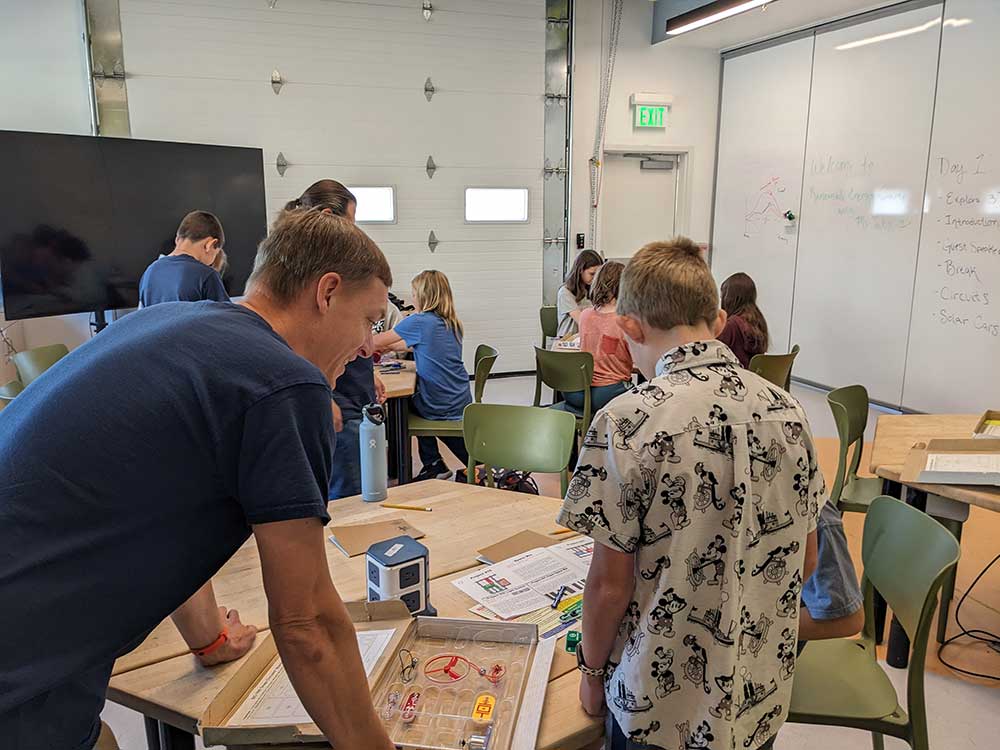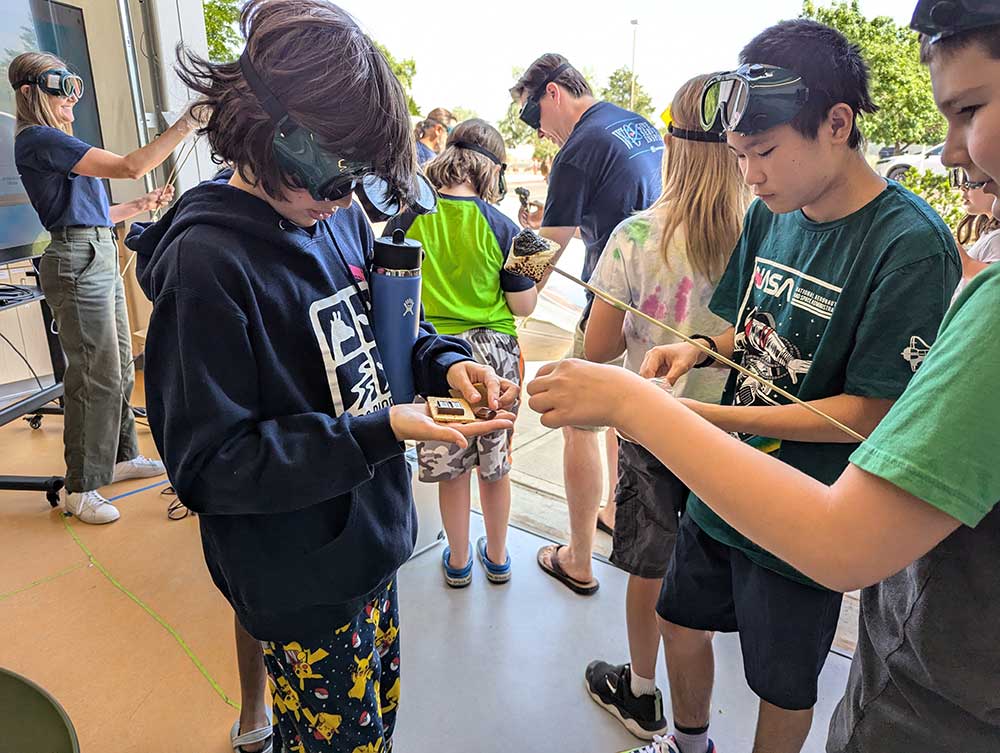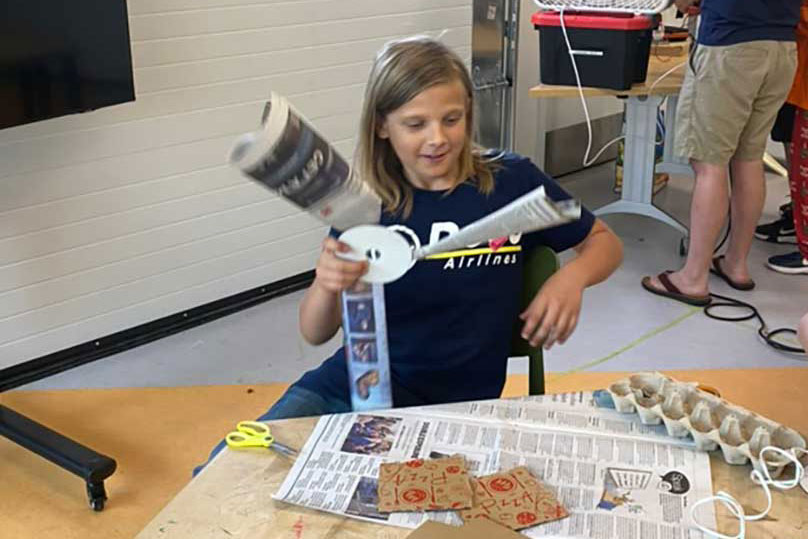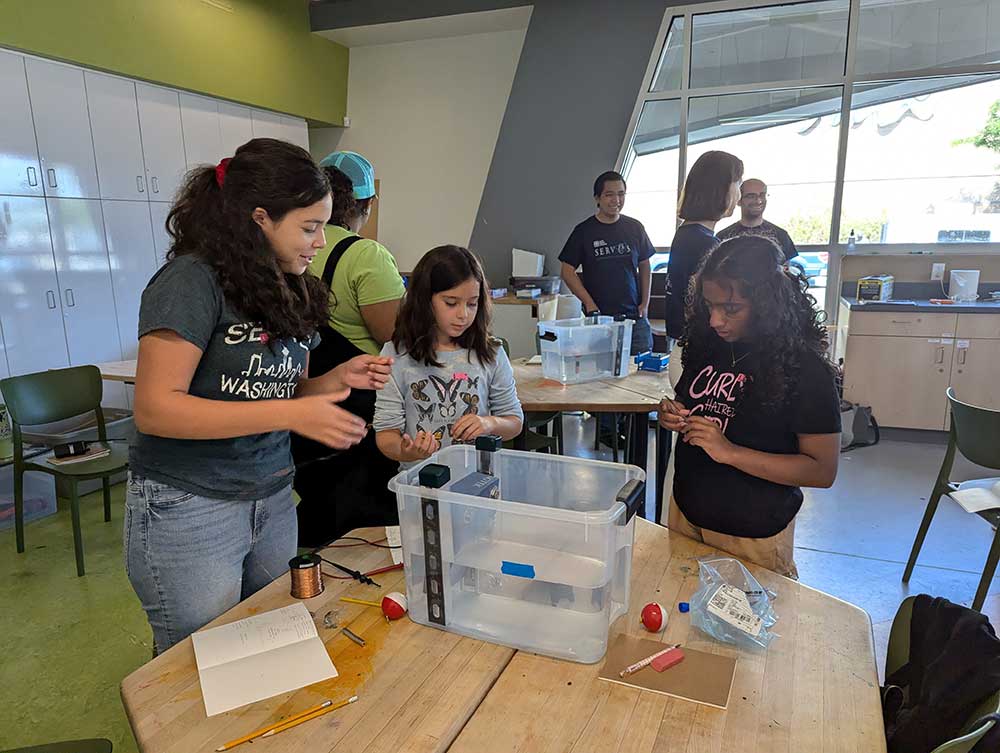Sandia and Explora host renewable energy summer camp

What do solar cells, mirrors, wind turbines and wave energy converters have in common? This summer, a group of New Mexico students explored how sun, light, wind and water contribute to a sustainable, renewable energy-powered future at Sandia’s first STEM summer camp. In partnership with Explora, sponsored by funding from the DOE Water Power Technologies Office and the Office of Technology Transitions’ C-4 Partnering Model, and with support from Sandia’s Community Involvement office, members of Sandia’s renewable energy program provided theory and hands-on demonstrations in a five-day summer camp.
Photovoltaics
Sandia electrical engineer Dan Riley kicked off the camp by leading students in a discussion on photovoltaics, units that convert sunlight into electricity and the building blocks for solar panels. Next, the students powered small electronic devices, including alarms and solar cars, with photo-voltaic snap circuits. When they real-ized the photovoltaic cells didn’t produce enough electricity to power the cars, the students scaled down and refined their designs.

Concentrated solar power
On the second day, systems engineer Miguel Leyba handed the students mirrors and asked them to reflect light from a high-intensity flashlight onto one spot on the whiteboard. Students saw how reflecting the light with multiple mirrors and merging it into one spot created more intense light than any single mirror could— the core idea behind concentrated solar energy.
Miguel also provided students with a virtual tour of Sandia’s solar tower and a description of the roles that worked together to make its design and construction possible. The morning ended with s’mores roasted using a solar dish concentrator, a technology featured at the National Solar Thermal Test Facility.

Wind energy
On the third day of camp, mechanical engineer Dan Houck introduced students to wind turbine design and related professions. Students pondered why the three-blade turbine design was the most widely used and brainstormed how engineers came up with that design. Using newspaper, cardboard, CDs and hot glue, students built, designed and tested their own mini wind turbines. Using a fan to generate wind, they tested the voltage output of a small DC motor and learned how different blade shapes and numbers impact energy production.

Water power
On the fourth day, marine renewable energy mechanical engineer Kelley Ruehl, electrical engineer Jorge Leon, and interns Megan Hinks and Rafael Baez Ramirez introduced types of water power devices and discussed the pros and cons of marine energy. With a basic grasp of how wave movement can be converted to energy, it was time for students to get their hands wet. They were tasked with reverse engineering a wave energy converter, called a point absorber, with magnets and copper wire then testing it in bins that served as mini wave tanks. The wave tanks were outfitted with a wave maker, built from metal rails and a yoga block. Students used a multimeter to measure the energy their devices produced and to see how wave intensity impacted energy output.
Grid integration
The last day of the camp, Jorge and electrical engineer Rachid Darbali explained how photovoltaic, concentrated solar, wind and wave energy can work together to create a resilient and green energy grid. Students had the opportunity to design a grid that would provide constant and consistent power in the face of demand spikes and natural disasters. They finished the camp by examining model wind turbines and racing wind and solar cars.
Going forward
Kelley and Explora educator Tabitha McFarland set a promising precedent for future camps focused on green energy, climate and diverse STEM careers. The STEM camp was part of an ongoing partnership between Sandia’s Water Power DEI in STEM project and Explora, which also includes teacher development workshops and other STEM events.
Explora and Sandia hope to expand the program into a full-day camp next summer, continuing their shared mission to inspire and educate future scientists and engineers.
